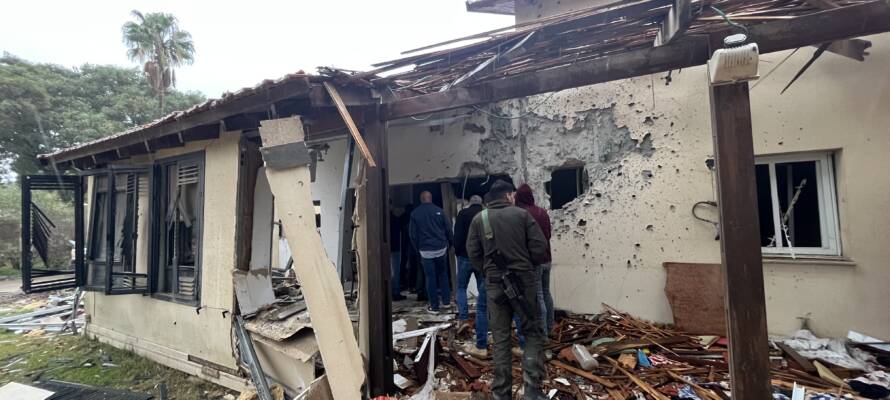Hamas killed 101 civilians at Be’eri and kidnapped 32 people, 11 of whom remain hostages in Gaza.
By JNS
Kibbutz Be’eri is set to receive nearly $100 million for rebuilding efforts, the largest sum to date allocated to any of the Gaza border communities invaded by Hamas terrorists on Oct. 7, Ynet reported on Monday.
The government funding is part of the Tkuma (revival in Hebrew) Directorate, which was established to oversee reconstruction in the communities of southern Israel impacted by the attack. It is set to deliver the final building plans to Jerusalem in two months.
“We learned by seeing other disaster aftermaths across the world to treat this like an opportunity,” the directorate said in a statement.
“The neighborhoods damaged in Be’eri are very old, with some of the [original] planning no longer being fit for the community’s needs. Other disasters showed that reconstruction is inadequate if members of the community aren’t involved in it.”
Nearly 350 Hamas terrorists, including 100 members of the terror group’s Nukhba Force, managed to infiltrate Be’eri on Oct. 7. due to catastrophic failures by the Israel Defense Forces, according to the first part of the IDF’s internal probe into the attacks, published last week.
According to the investigation, Hamas killed 101 civilians at Be’eri and kidnapped 32 people, 11 of whom remain hostages in Gaza. The probe credited the local armed response team with “determination and courage.”
“Their bravery, in defending the kibbutz and its residents with their bodies, should be considered a miracle,” the investigation states.
“It was this fighting that stopped the total occupation of the kibbutz and saved many lives.” The Israeli military also praised Be’eri’s emergency team for “forming an updated situational picture and maintaining contact with the residents under fire.”
Israeli soldiers “acted with great bravery and ferocity,” according to the investigation, and 31 were killed in combat, including 23 IDF members and armed response team members, in addition to eight police officers. Many soldiers and civilians were hurt.
Some 100 terrorists were killed in the kibbutz, per the investigation.
The report concluded that the IDF “was not prepared for the kind of extensive infiltration scenario that happened on Oct. 7, which included multiple areas of infiltration by thousands of terrorists, attacking in dozens of focal points at the same time.”
Doron Segev, an architect from the kibbutz, told Ynet that some members don’t want to erect a memorial in the community. Some want the damaged homes to become memorials, while others want to return to them, even if damaged.
Therefore, the fund will include the construction of a new neighborhood, to which kibbutz members who do not wish to return to their original homes will have the option of relocating.
“Most of the kibbutz members didn’t want to return to their previous home nor fix it because of their memories of it. It’s clear we won’t be able to undo what was done, but we’ll have to include memorials in a delicate manner according to the members’ wishes,” said Segev.
